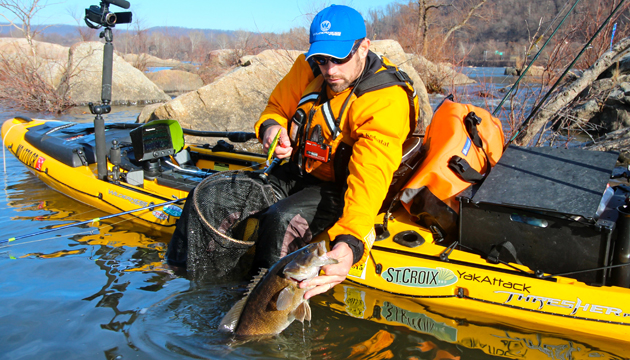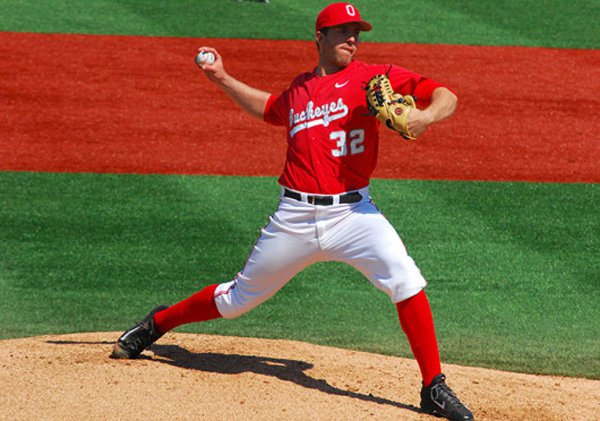
Jeff Little capitalized on a short-lived warming trend to catch big fish in the shallows. Photo courtesy Jeff Little.
Each springtime, a series of alternating warm and cool fronts gradually awaken the ecosystem. The minnows, crawfish and aquatic insects activate when the longer days of sunlight progressively warm the water, especially the shallow water. The predatory fish soon follow.
The largest predators always seem to have a jump on this process. They are there in the shallows ready to gobble up anything that wiggles or twitches. They are there when the water is still quite cold. They have to be first so the largest female fish can grow their egg mass, and the largest male fish can become as strong as possible to survive the rigors of the spawn.
Right now, most river smallmouth (and reservoir largemouth or Chesapeake Bay striped bass) are hunkered deep for winter. The spawn is almost half a year from now. Why discuss it in January? Because “false spring” will awaken, if only briefly, the largest fish. They come shallow and eat. We had such a weather trend last week.
Over the course of two days, an inch of warm rain permeated the watershed. Air temperatures in the 50’s were echoed a day later on the temperature graph of the river. On the fourth day of the warming trend, I took advantage of the warm weather and hit the river with a friend in search of smallmouth.
One section of the river is a massive wintering hole. Driving north on Pennsylvania route 322 on most Saturdays November through March, you can easily count between three and thirty three jet boats anchored up. They will be dropping tubes and hair jigs into 15 foot deep trenches where literally thousands of smallmouth bass huddle in vertical eddies to withstand winter’s cold temperatures.
Dave and I went there, but we didn’t spend any time where the jet boats clustered. We ended up counting 17 different boats on that spot. Instead of anchoring up within a half a cast of four different boats, we moved to the perimeter of the deep water.
Within ten minutes of anchoring in a 4- to 6-foot deep eddy behind a large ledge rock, I noticed that my depth finder temperature graph read 40.2 instead of 38.9. The difference in temperature can be attributed to a change in depth and amount of current. Shallow still water warms faster than deep turbulent water.
Inside of my first four casts, I netted two smallmouth, measuring 19 and 19.75 inches. We rotated through a series of similar still shallow water eddies near the deep water, finding several other big smallmouth. None were shorter than 18.5 inches. This is exactly what happens in the spring – big fish rush to spawning areas first. They stake out their territory and feast on whatever they can find before the great numbers of small- to mid-sized fish follow.
Such a movement is short lived in late December through early March. If you see a warming trend of at least three days of well above average air temperatures, plan on being on the water on that magical fourth day. Fish shallow, don’t expect many bites, but expect them to come from big fish.
Jeff Little is a Regional Pro Staff Director for Wilderness Systems Kayaks who also produces instructional fishing video for his Tight Line Junkie’s Journal Pivotshare channel.
2012 Euro has Schedules Ready for June

President Abraham Lincoln and my Major league baseball coffee mug

It takes courage to explore and Adventure more than training!

Copyright © www.mycheapnfljerseys.com Outdoor sports All Rights Reserved